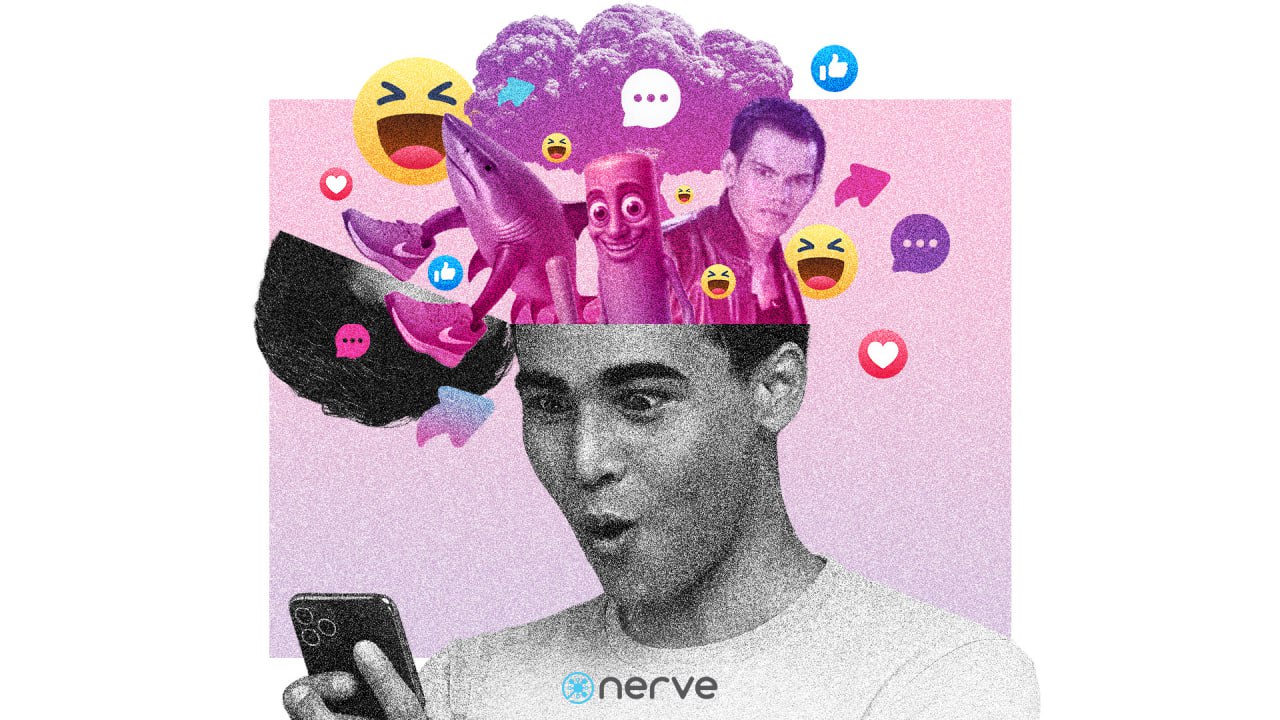[DECODED] How absurd memes help Filipinos cope with crisis and chaos
Read more
From World War III jokes to AI-generated memes, TikTok brain rot isn’t just noise — it’s a resonant response to fear, politics, and disasters
MANILA, Philippines – What hafen, Vella? Why you crying again? I know, current events, right?
Our For You feeds and pages are serving us rounds of Italian brain-rot content and World War III jokes, all while everyone’s pretending not to panic.
But that’s just another day in the dizzying world of the Philippines’ internet: a nonstop scroll of absurd memes, viral sounds, and surreal videos that somehow make politics and disaster oddly hilarious.
You might find yourself laughing at videos of flooded Manila streets with the viral “Nothing beats a Jet2 holiday” audio clip, or AI-generated Italian brain rot memes that make absolutely no sense. It’s absurd, but that’s pretty much the point.
The term “brain rot,” named Oxford’s Word of the Year in 2024, refers to the feeling of mental overload or saturation caused by consuming large amounts of often silly, low-quality, or repetitive online content. This refers to the feeling where your brain is almost “rotting,” because it’s been processing endless memes, videos, and internet references.
But despite its negative connotations, brain rot is also a way that many young people express themselves through the good and bad. These memes might seem like nonsense at first glance, but they’re actually a creative way for young users to deal with real anxieties, share frustrations, and even poke fun at political and social problems they face every day.
We at The Nerve analyzed a total of 723 TikTok brain rot videos shared between April and July 2025. We identified four key brain rot trends that went viral on the platform during the given time period:
- Italian brain rot memes
- Cristopher Diwata’s “What hafen, Vella?” performance on It’s Showtime
- World War III jokes, following US strikes on Iran
- Aura farming videos
At first glance, these trends seem to sit comfortably in the realm of absurdist humor and fleeting internet silliness. But the patterns beneath tell a different story.
Complex issues made accessible through humor
Many of these viral moments were anchored in topical or politically charged contexts, wrapped in enough randomness to feel safe and shareable.
Our scans reveal this hidden layer: in “brain rot” videos, the dominant emotional tones weren’t the joy or lightheartedness that most would expect from meme culture, but spikes in anger and fear. These emotions are strongly linked to polarizing issues like government controversies or geopolitical events.
For instance, the US attacks on Iran earlier this June triggered fears about a possible World War III. Online, these fears led to the rise of brain rot memes that turned anxieties about war and instability into absurd humor.
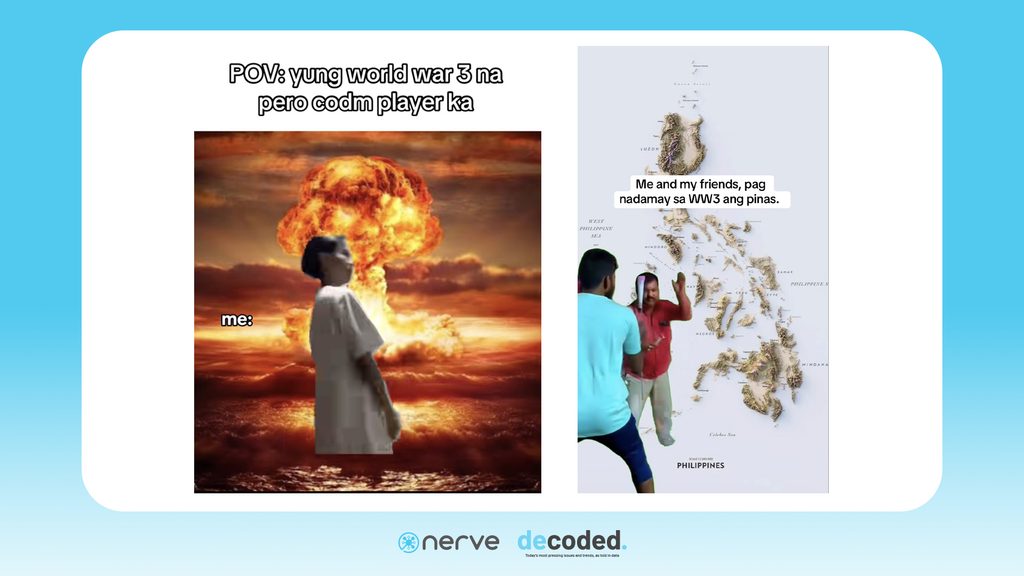
This emotional undercurrent helps explain brain rot’s magnetic pull. It transforms weighty, potentially exhausting topics into bite-sized, absurd packages, giving audiences a way to acknowledge and process tension, anxiety, or dissent without directly confronting them.
The chaos becomes a shield, allowing difficult realities to be engaged with at a distance, under the guise of humor.
Experts say this irony is intentional. In an interview with The Nerve, Dough Ancheta, a humor studies scholar from the University of the Philippines Diliman, explained that brain rot memes “make [current events] ever present so that we don't forget [them].”
In an online environment saturated with grim news, humor helps people stay aware without burning out. Filipinos also have a deeply rooted love for humor, which Ancheta said is “very communal.”
“These horrific realities, these what-ought-to-be-unacceptable realities are always present, but we don't really feel that they are that horrible anymore…. [Brain rot content] invites people to highlight what they ought not to be experiencing, but are experiencing otherwise,” she said.
This emotional release is exactly what draws people in, said Faye Margarette De Leon, a cultural researcher. De Leon wrote the journal article The Rise of Meme Culture, which explores how internet memes can potentially be used for political propaganda.
“[Memes act as] a way that we can stay still informed of our political landscape, our social landscape, without it feeling too heavy on us,” she explained.
De Leon recalls observing this phenomenon firsthand as an undergraduate student. “When I’m with my friends…the way that we talked about [what was] happening in our world — whether it’s natural disasters [or] politics — it’s actually through a form of laughter. It’s through a form of memes,” she said.
How memes tap into anger, fear, and surprise
The reason any kind of content becomes viral on social media is because they resonate with people’s emotions. The same can be said for memes.
The Nerve’s analysis showed that the emotional tones shift alongside each emerging trend: anger during tense news, and surprise when the next outlandish joke (or new disaster) lands.
(Select a month in the drop-down menu below to view shifts in emotional tones of brain rot TikTok posts.)
In April 2025, anger scores spiked, while there was a slight hike in happiness and surprise scores. This month was dominated by the Italian brain rot trend, marked by overstimulating visuals, AI-generated characters, sped-up or screaming Italian audio clips, and exaggerated reactions to mundane situations.

By May, overall emotional intensity dropped, but The Nerve’s analysis saw fear and disgust receiving the highest scores. Much of the engagement centered around the “What hafen, Vella” trend featuring Cristopher Diwata, a Filipino Taylor Lautner lookalike. On the Philippine show It’s Showtime, Diwata parodied Twilight’s Jacob Black through a dramatic monologue, which went viral on the internet.
His theatrical delivery and the suspenseful edits that followed contributed to continued fearful scores, even as other emotions flattened.
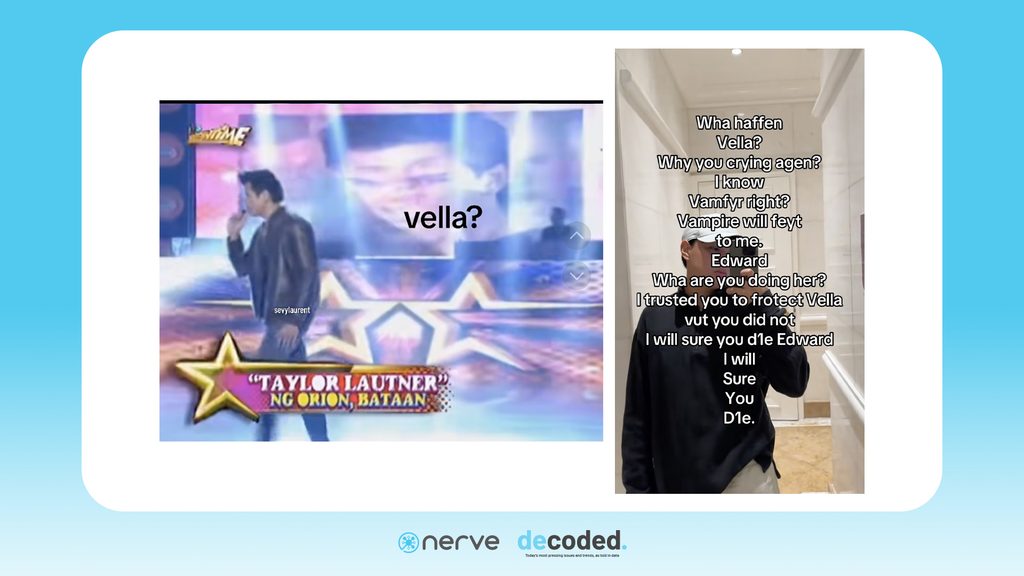
By June, fear scores declined slightly, while neutrality and surprise increased. Although “What hafen, Vella” videos remained popular, new trends like “aura farming” began to gain traction.
Among the most popular aura farming videos features 11-year-old Indonesian boy Rayyan Arkan Dikha confidently dancing on a boat during the annual Pacu Jalur race. Many TikTok users recreated the said video in their own ways, projecting an unbothered, confident, almost gangster-like attitude.
While aura farming videos resonated with TikTok users, they were less emotionally chaotic than earlier trends.

In July, disgust scores showed a slight but noticeable uptick, alongside a minor increase in sadness. This shift came with a surreal new wave of Italian brain rot videos, which introduced skeleton versions of previously seen AI-generated characters and eerie, unsettling audio clips.
Heightened emotions in brain rot memes draw users in
Brain rot’s appeal isn’t just in its randomness, but in how it wraps volatile, high-stakes themes in absurd humor.
Our scans show that videos with emotional spikes in fear, surprise, and anger consistently drew higher engagement, suggesting that audiences aren’t just entertained by the chaos, but are also hooked by the tension simmering underneath.
This emotional profile reinforces what the numbers already hinted at: brain rot isn’t simply about random fun. Rather than pushing people away, these heightened emotions appear to intensify participation, fueling shares, comments, and remixes.
In short, emotional volatility isn’t a byproduct of brain rot, but is part of the formula that keeps it alive and spreading.
For example, variations of Diwata’s “What hafen, Vella” monologue performed well on TikTok, with one video from the official Netflix Philippines account amassing 1.2 million likes on the platform. Diwata himself also took advantage of this meme for commercial and marketing purposes. One of his videos promoting a skincare brand generated over 611,000 likes on TikTok.
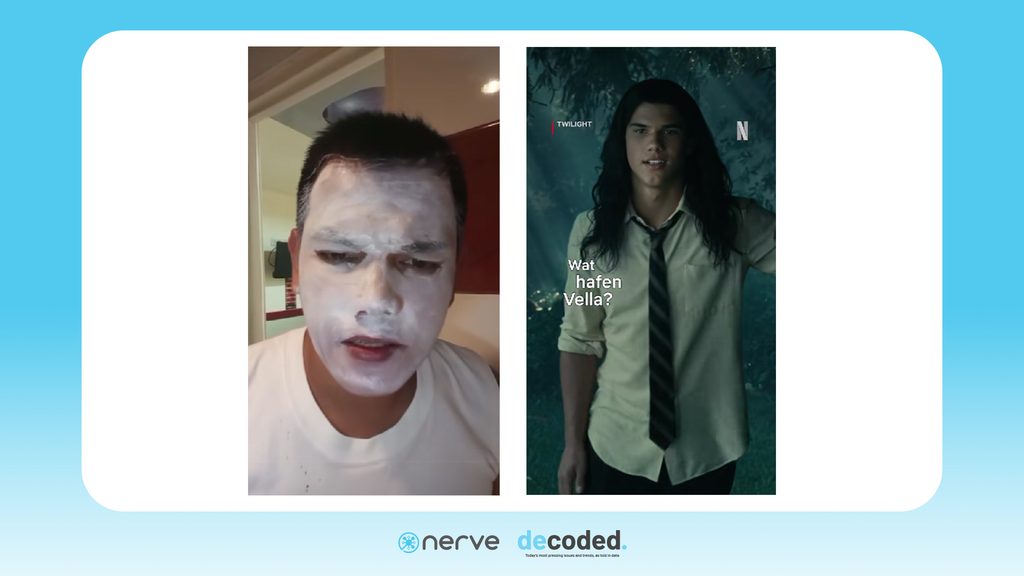
The popular aura farming video featuring Dikha also performed well on the platform, racking up 848,600 likes. Another standout was an Italian brain rot video featuring the AI-generated character Ballerina Cappucina, which earned 357,800 likes on TikTok.
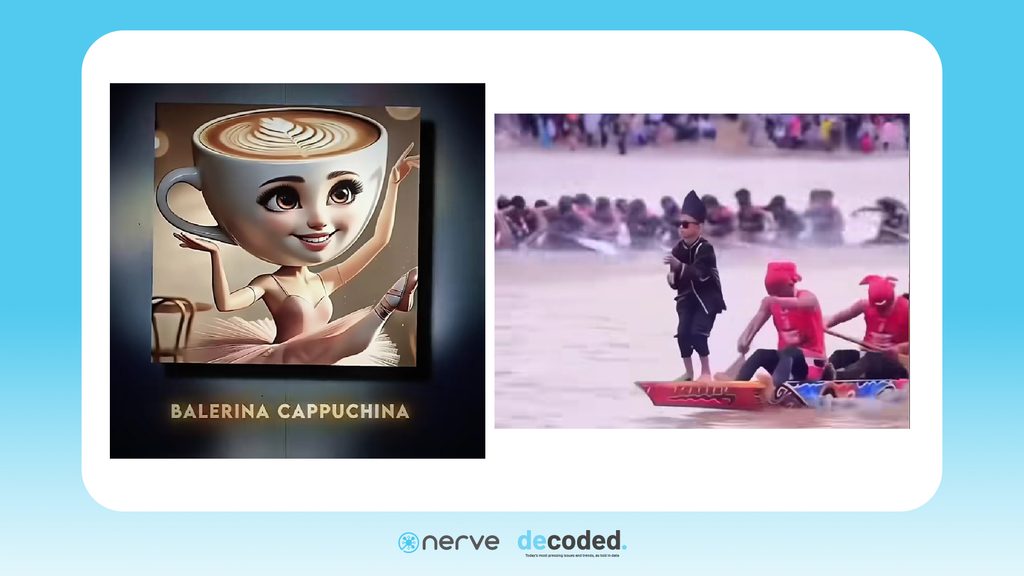
While older generations might view brain rot content as nonsensical or a sign of cultural decline, the absurdity gives younger Filipinos another way to connect with one another. Brain rot humor sticks because, beyond the absurd visuals, it brings Filipino users with shared experiences together.
“The foundation of humor is absurdity, and we connect to that absurdity. On a personal level, or on a communal level, what we're seeing on screen echoes something that we’re familiar with already,” Ancheta explained. – Rappler.com
Allyzza Gene, Bettina Mateo, and Adrian Barizo are Rappler interns. This story was originally published on Rappler on August 15, 2025.
Decoded is a Rappler series that tackles Big Tech not just as a system of abstract infrastructure or policy levers, but as something that directly shapes human experiences. It is produced by The Nerve, a data forensics company that enables changemakers to navigate real-world trends and issues through narrative and network investigations. Taking the best of human and machine, we enable partners to unlock powerful insights that shape informed decisions. Composed of a team of data scientists, strategists, award-winning storytellers, and designers, the company is on a mission to deliver data with real-world impact.


